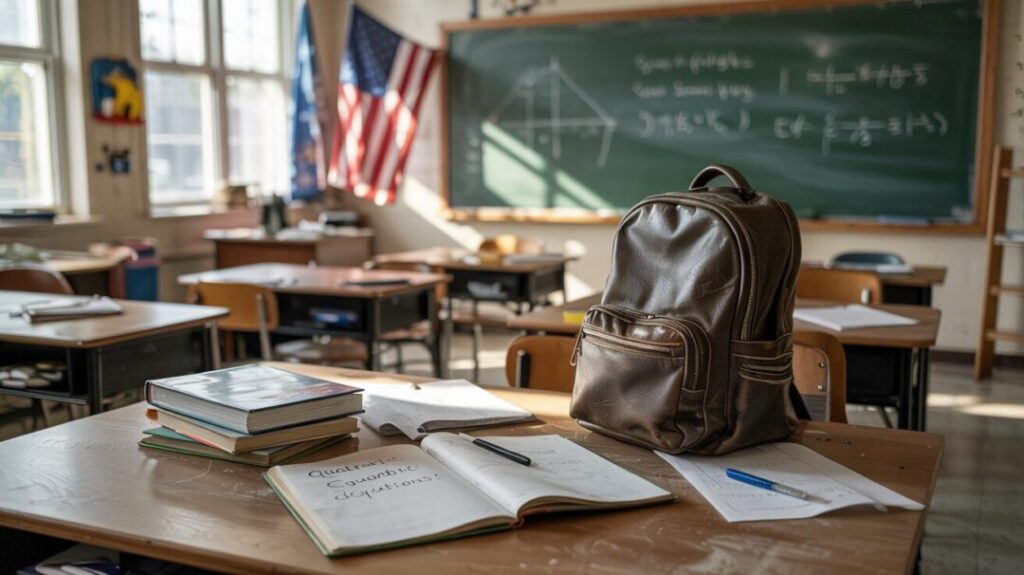American high-school seniors’ scores on math and reading tests fell to their lowest levels on record, according to results recently released by the U.S. Education Department.
Twelfth-graders’ average math score was the worst since the current test began in 2005, and reading was below any point since that assessment started in 1992.
The share of 12th-graders who were proficient slid by 2 percentage points between 2019 and 2024 – to 35% in reading and 22% in math.
The results are from tests that are part of the National Assessment of Educational Progress, administered to tens of thousands of students in early 2024.
The declines deepen slides that began before the pandemic and are the latest in a series of gloomy measurements showing U.S. students are learning less than several years ago.
Students have fewer skills and less knowledge in core academics than their predecessors a decade ago.
It’s happening at a time of rapid advancements in technology and society demanding more of future workers.
Only 26% of Americans report satisfaction with K-12 education, according to a September Gallup survey.
Studies have found schools that were closed for longer periods during the pandemic experienced larger learning declines.
Since then, schools have been beset with problems, including high absence rates, student misbehavior, teacher retention and classroom distractions from social media and cellphones.
The Education Department defines “chronic absenteeism” as missing at least 10% of a school year.
In the two years before the pandemic, national rates of chronic absenteeism stood at 15%, a level widely viewed as a crisis.
Post-pandemic, this rate had nearly doubled, to 28.5% in 2022.
Students didn’t return to school in expected numbers. After 2022 the rate of chronic absenteeism remained high.
The rate came down by 3 percentage points in 2023, and by even less—only 2 points—in 2024.
Absenteeism in 2024 reached 23.5%, that’s 57% higher than it stood just prior to the pandemic.
While the causes of chronic absenteeism aren’t all certain, one thing is clear: this is a national problem.
The U.S. will pay a high price until it gets it under control.
The longer chronic absenteeism persists, the more students will experience poor academic outcomes.
Nevada’s chronic absenteeism rate decreased to 25.9% in the 2023-24 school year, a significant improvement from the 34.9% rate in 2022-23.
This 9% drop represents progress, with many schools lowering their rates, but Nevada’s rate remains above the national average of 23.5% for the same period.
Since the pandemic, Nevada schools have stepped up efforts to reach chronically absent students, including checking in with students by phone, home visits and mentoring programs.
Nevada is one of 17 states starting this school year with new restrictions on cellphones in classrooms, with 35 states now having laws or rules limiting phones or other electronic devices in school.
While not an outright cellphone ban, Sen. Angie Taylor (D-Reno), former president of the Washoe County School Board, sponsored SB444 which helped standardize and require the policy statewide.
The bill passed the Legislature unanimously.
On Sept. 15, the Nevada Department of Education released data showing hundreds of Nevada schools increased their “star ratings,” which measures how well a school is meeting the state’s performance ratings.
School performance is trending in a positive direction.
Statewide, more than 28 percent of public schools increased their ratings in the most recent academic year, about three times the number of schools that saw their ratings drop, according to a Nevada Independent analysis.
Improvement comes after Republican Gov. Joe Lombardo and the Democrat-controlled Legislature approved a $2.6 billion increase in K-12 education funding during the 2023 legislative session—about 26 percent higher than previous levels.
“If you have patience, especially in education, and let these policies take root, we will have effective, positive change,” Lombardo contends.
The opinions expressed by contributors are their own and do not necessarily represent the views of Nevada News & Views.




